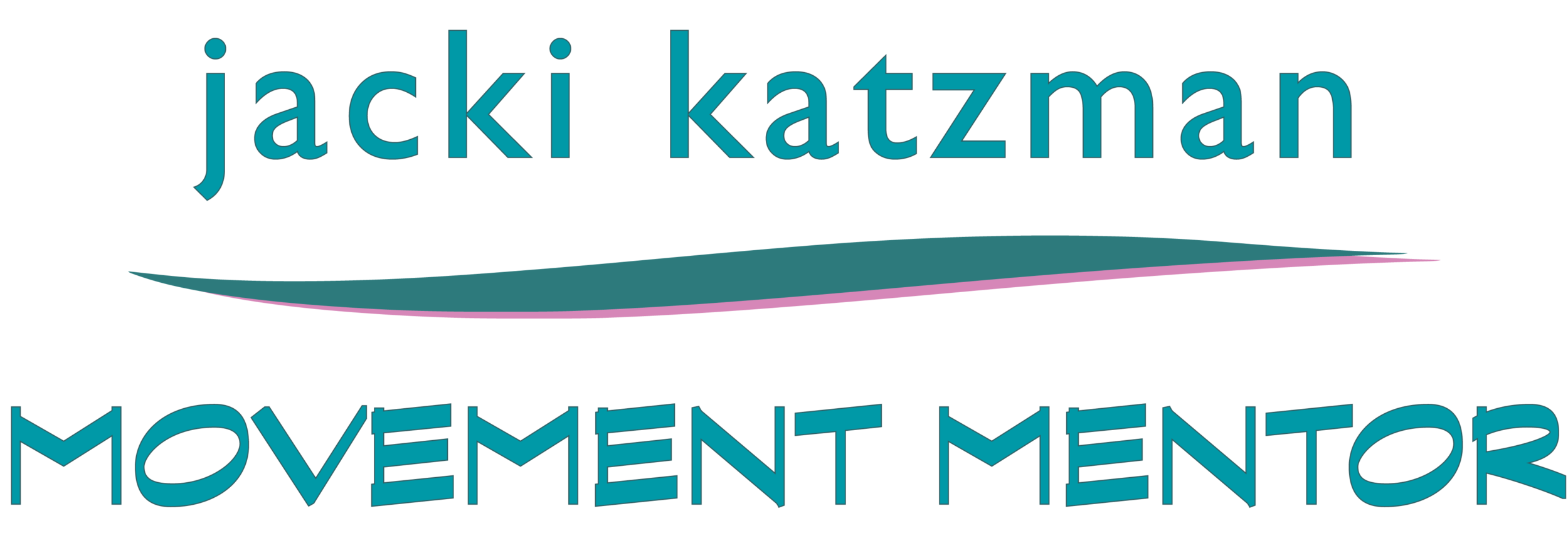More Pelvic Floor - 5 - Strength Training, Slowly and with a Tilt
More Pelvic Floor - 5 - Strength Training, Slowly and with a Tilt
Effectively Strengthening the Lower Abs, Low Back and Pelvic Floor
Turn on your entire brain by imagining you, too, have personalized armor that makes you look great, and has a fabulous golden belt that supports your belly. That Wonder Woman ‘belt area’ is the focus this week.
We will apply our legs’ weight, in slow, eccentric contractions to strengthen the lower pelvic floor. Slow is the operative word for this supine (lie on the back) lesson. It’s the slow, patient attention to the legs, back muscles and abs that ultimately relaxes and strengthens the pelvic floor.
Thirty six muscles attach to the sacrum or pelvic bones to provide stability to the joint AND produce movement.
The adductors are fan-like muscles in the upper thigh that pull the legs together when they contract. They also help stabilize the hip joint. The adductors attach from the pelvis to the femur (thigh bone). In a human, the adductors muscles found in the thigh area of the leg are commonly referred to as groin muscles. The group includes the adductor Magnus, adductor longus, adductor brevis, pectineus, and gracilis. . The adductors attach from the pelvis to the femur (thigh bone)
The abductor muscles of the hip and leg so the opposite - their action moves the legs away from the midline. This muscle group is comprised of the gluteus medius muscle (the primary abductor) and the gluteus minimus. The synergist muscles include the psoas, piriformis, tensor fascia latae (TFL), sartorius, quadratus lumborum, and rectus femoris.
Abdominal and thigh muscles. Image source: :innerbody.com
Side view of torso, showing the key muscles that stabilize the torso and spine. Source: https://learnmuscles.com/
All these muscles interact with the abdominals via the pelvis. The deep part of the transverus abdominis as well as the rectus abdominus, which runs up the centerline, and the obliques all respond to action in the legs to stabilize the spine so we can be upright, carry the weight of the torso and head, while supporting the spine’s bending (flexion) when needed.
This lesson uses the principal of eccentric contraction to strengthen these deep muscles. Eccentric contraction is muscle lengthening that happens when a force applied to the muscle surpasses the force it produces. In other words, contracting against a weight to strengthen. Eccentric muscular action is stronger and spends less energy than concentric contraction (“higher force at lower cost”)
We will be using the weight of the legs and head to build strength in muscles surrounding the pelvis, which in turn allows the pelvic floor to contract as needed.
Eccentric contraction is when a muscle tightens while being pulled. It’s the most efficient form of strength training. source: https:::med.libretexts.org
You will have guessed correctly that I did a lot of research on this lesson - and the one that we will explore next week. I needed to know more about the leg adductors, and their relationship to the abs and the spine stabilizing muscles. I looked all over for an animation of the leg muscles and pelvis tipping to the side, with no success. But I did find these cool videos to share with the science nerds:
Target Your Rectus Abdominis with 3 Ab Exercises (useful up to 1:45)
Prolonged sitting and back pain (short animation of desk jockey back and neck pain
Vidéo sonorisée Les muscles abdominaux (20 min, in French – turn off sound and play at 2x – you’ll get the gist)
Les muscles de la cuisse : les ischio-jambiers (French, full thigh and hip mechanics)
L'ilio-psoas ou psoas-iliaque (French, shows sit up)
How to do a Squat Properly (doughboys put legs muscles on )
If you take it slowly, as directed, you will be on your way to a stronger core supporting a relaxed pelvic floor. And you want a relaxed pelvic floor for those unexpected sneezes and coughs. Your future self thanks you for starting now.




